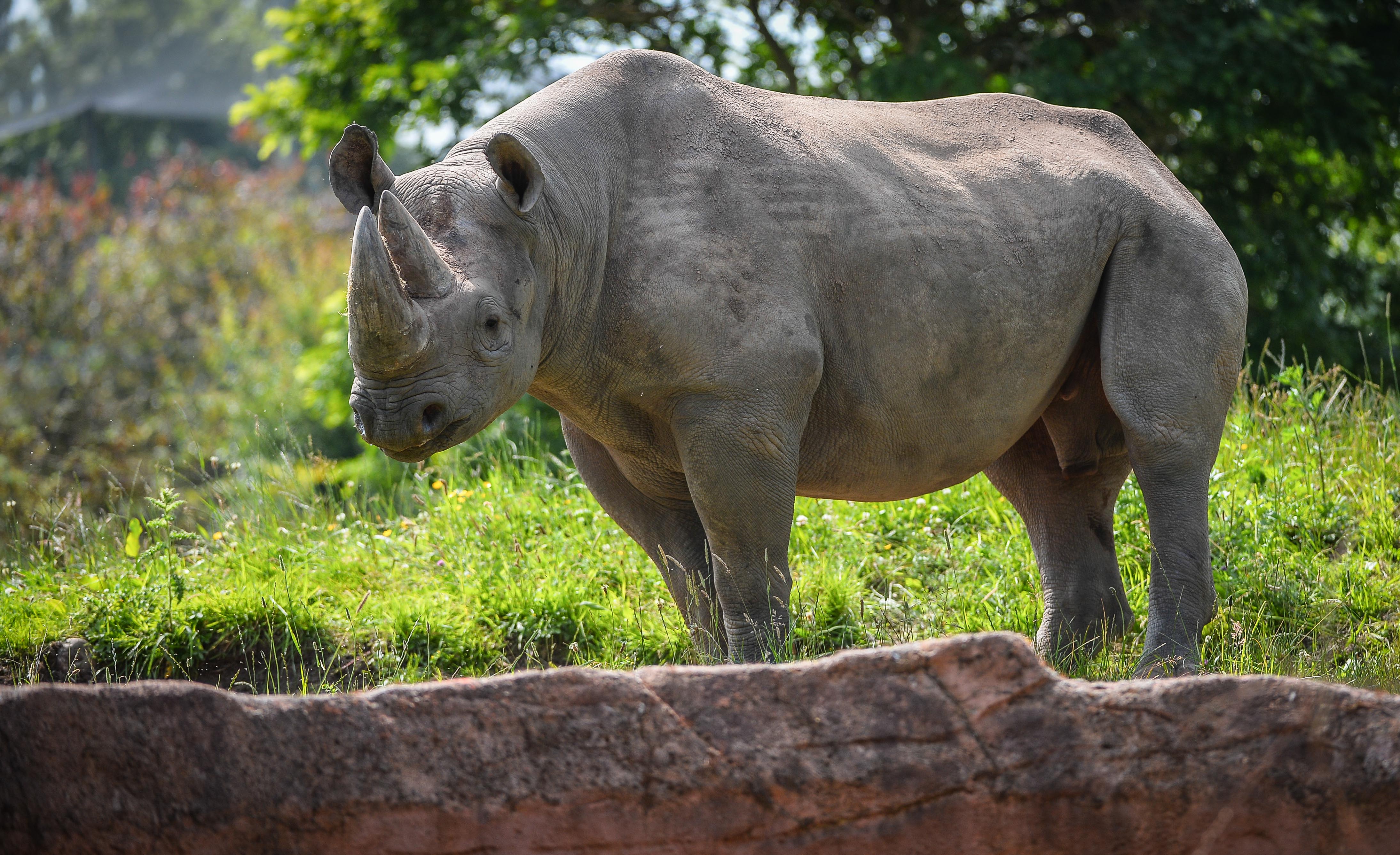Rhino Reproduction Could Get Boost from Hormone Tests

Rhino reproduction may undergo a renaissance in European zoos, as researchers try to tap into how they can boost the success of these massive animals mating in captivity, according to a new study.
The endangered black rhino, illegally hunted for its horn, has low birth rates in European zoos, the researchers said.
Curious as to why some captive rhinos breed with ease whereas others never reproduce, researchers in England launched a detailed study of 39 captive rhinoceroses, which make up about 90 percent of Europe's rhino population. [Album: The World's Biggest Beasts]
"This species is of high conservation importance, so understanding what could be limiting breeding in certain individuals and how we could make improvements is a priority," Katie Edwards, who led the research as part of her Ph.D. studies at the University of Liverpool, said in a statement.
Edwards and her colleagues needed biological samples, so they turned to the rhinos' droppings. With help from 11 zoos across Europe, they collected the rhinos' poop samples every other day for up to six years. In all, the researchers studied hormone levels in 9,743 samples that they used to study the rhinos' reproductive cycles.
Of the rhinos studied, 17 had given birth, 15 had not, and seven were too young to reproduce, the researchers said. Irregular ovulation cycles were more common in female rhinos that had not reproduced, they found.
"Our analyses showed that females who had never bred were more likely to exhibit irregular oestrus [ovulation] cycles, indicating that underlying physiology is involved in differences in breeding success," Edwards said.
Get the world’s most fascinating discoveries delivered straight to your inbox.
Behavioral observations also provided little help, as non-breeding female rhinos "don't necessarily show when they are ready to mate, which can make managing breeding difficult," Edwards said. Instead, hormone analysis may help zoos predict when females are ready to mate, she explained.
In fact, hormone analysis has already helped with the births of three rhinos in the past three years at the Chester Zoo in Cheshire, England.
In addition to hormone analysis, the study identified other factors that may increase the rate of successful breedings.
Rhinos that did not breed tended to weigh more than those that had. This suggests that zoos should carefully consider the diets and exercise regimens for animals in captivity, Edwards said. Also, non-breeding female rhinos tended to have more unpredictable temperaments.
The study, published online Aug. 20 in the journal General and Comparative Endocrinology, is the first comprehensive examination of captive black rhino reproduction in Europe, the scientists said.
"This research highlights how rhinos can behave in a different manner despite being kept in similar conditions," said Susanne Shultz, the academic supervisor of the study and a senior research fellow at the University of Manchester in England. "We think this demonstrates that it is important to recognize individual differences and adjust management plans accordingly to maximize the health and reproduction across all individuals in the population."
Increasing the birth rate of captive rhinos may help the survival of the species, experts said. "Poaching in the wild is a serious threat to the rhino," said Sue Walker, head of applied science at the Chester Zoo, who oversaw the project. "Therefore it is important for us to understand the factors that can influence reproductive success."
Follow Laura Geggel on Twitter @LauraGeggel and Google+. Follow Live Science @livescience, Facebook & Google+. Original article on Live Science.

Laura is the managing editor at Live Science. She also runs the archaeology section and the Life's Little Mysteries series. Her work has appeared in The New York Times, Scholastic, Popular Science and Spectrum, a site on autism research. She has won multiple awards from the Society of Professional Journalists and the Washington Newspaper Publishers Association for her reporting at a weekly newspaper near Seattle. Laura holds a bachelor's degree in English literature and psychology from Washington University in St. Louis and a master's degree in science writing from NYU.


